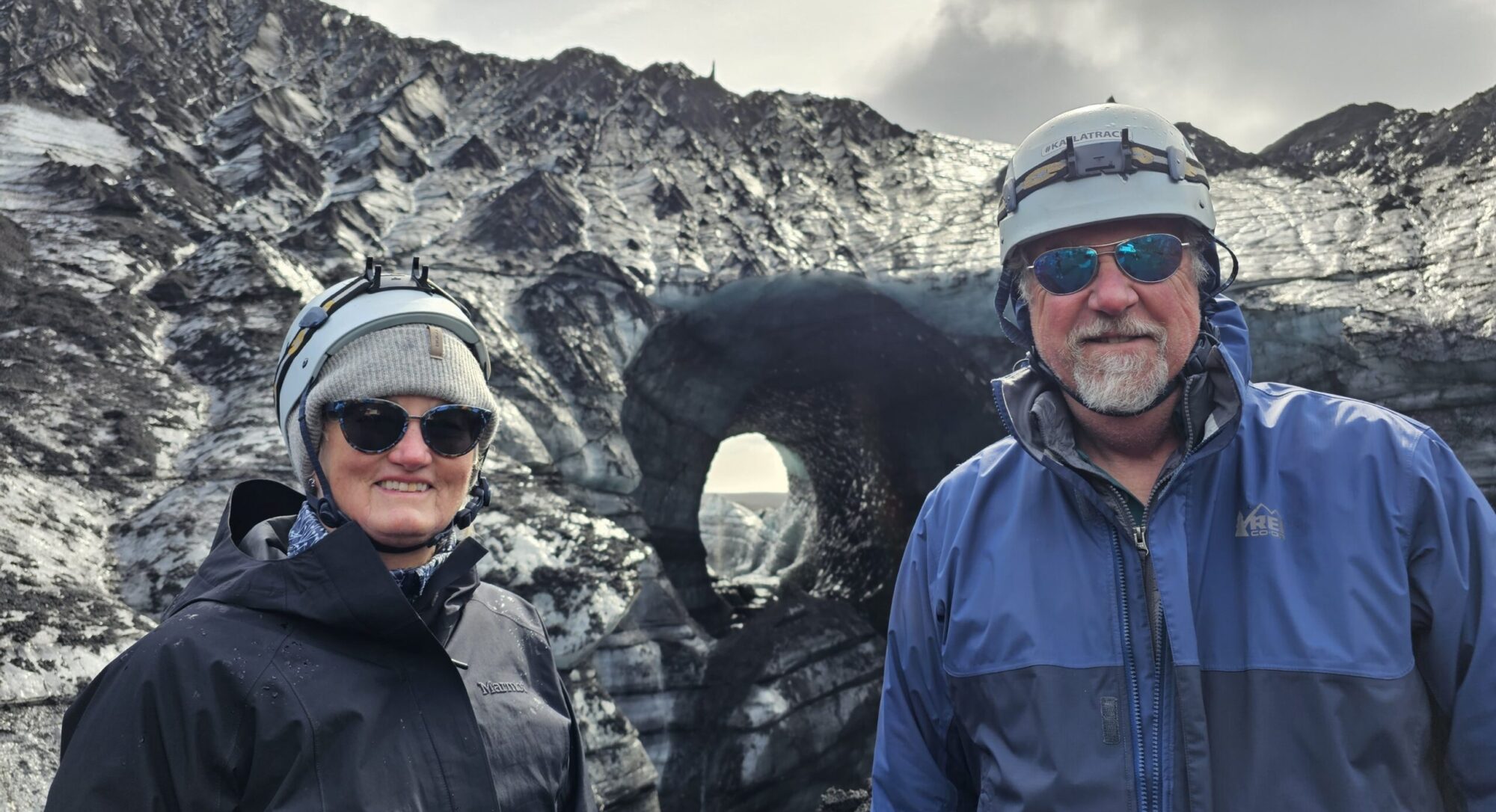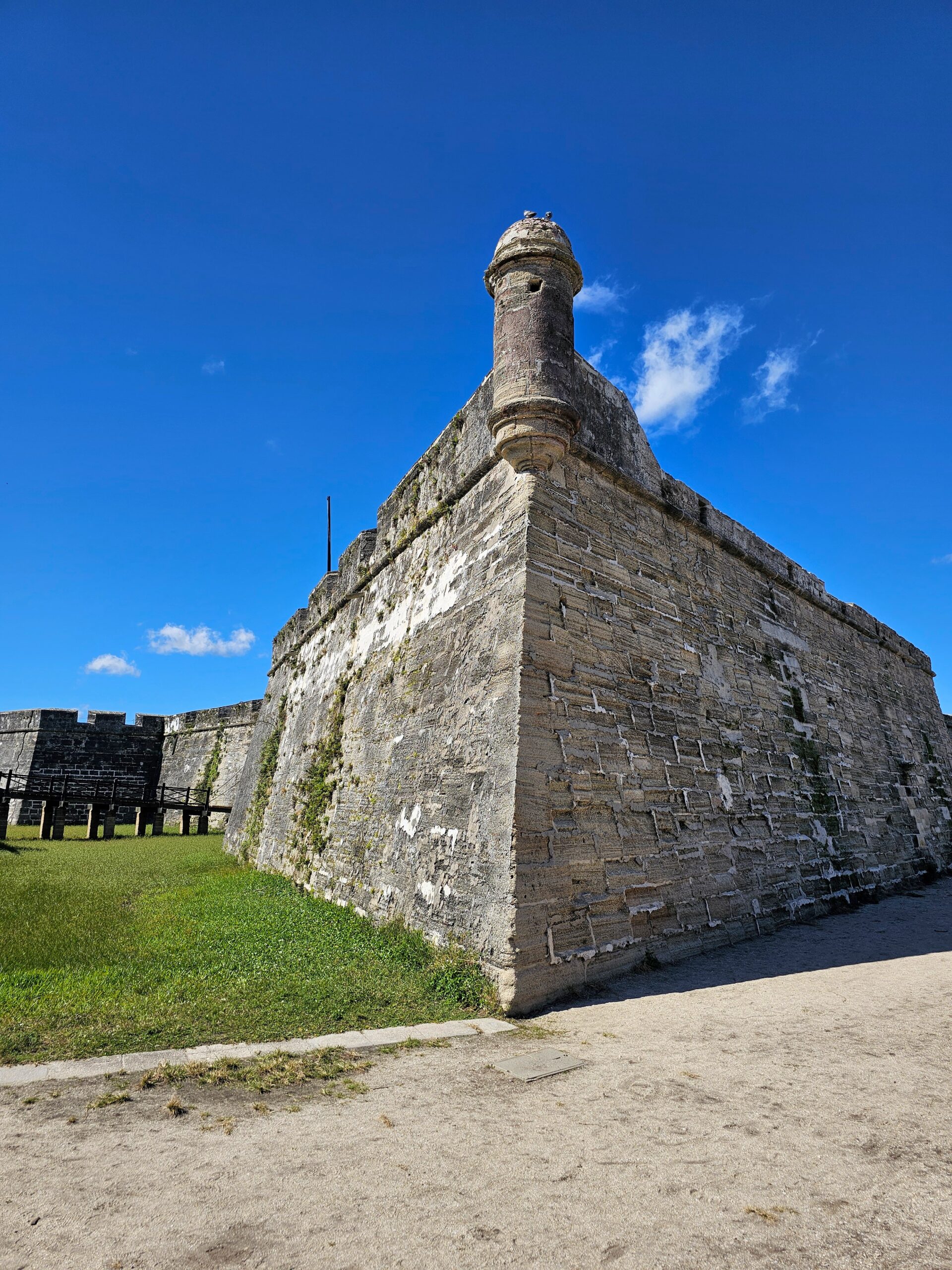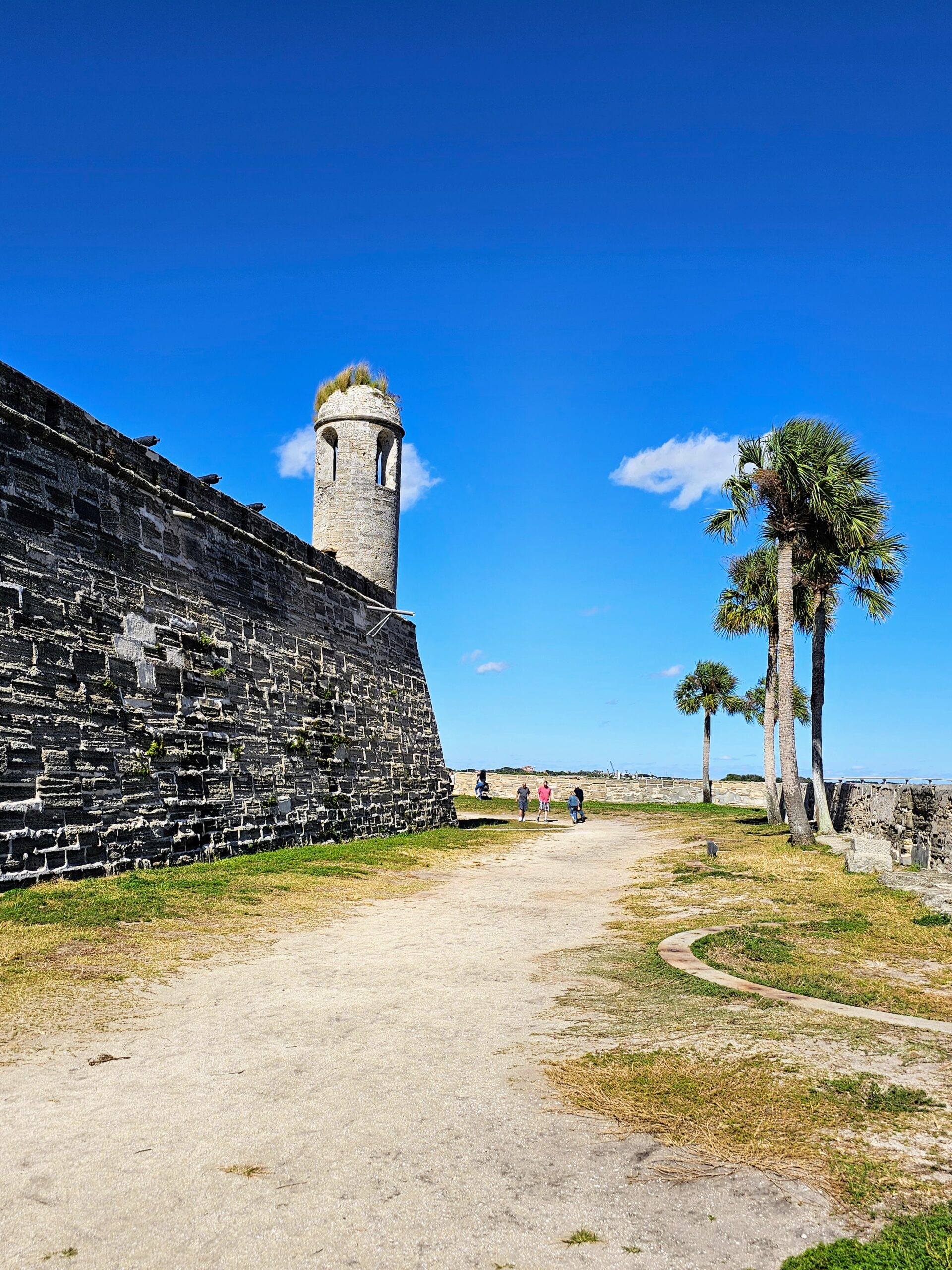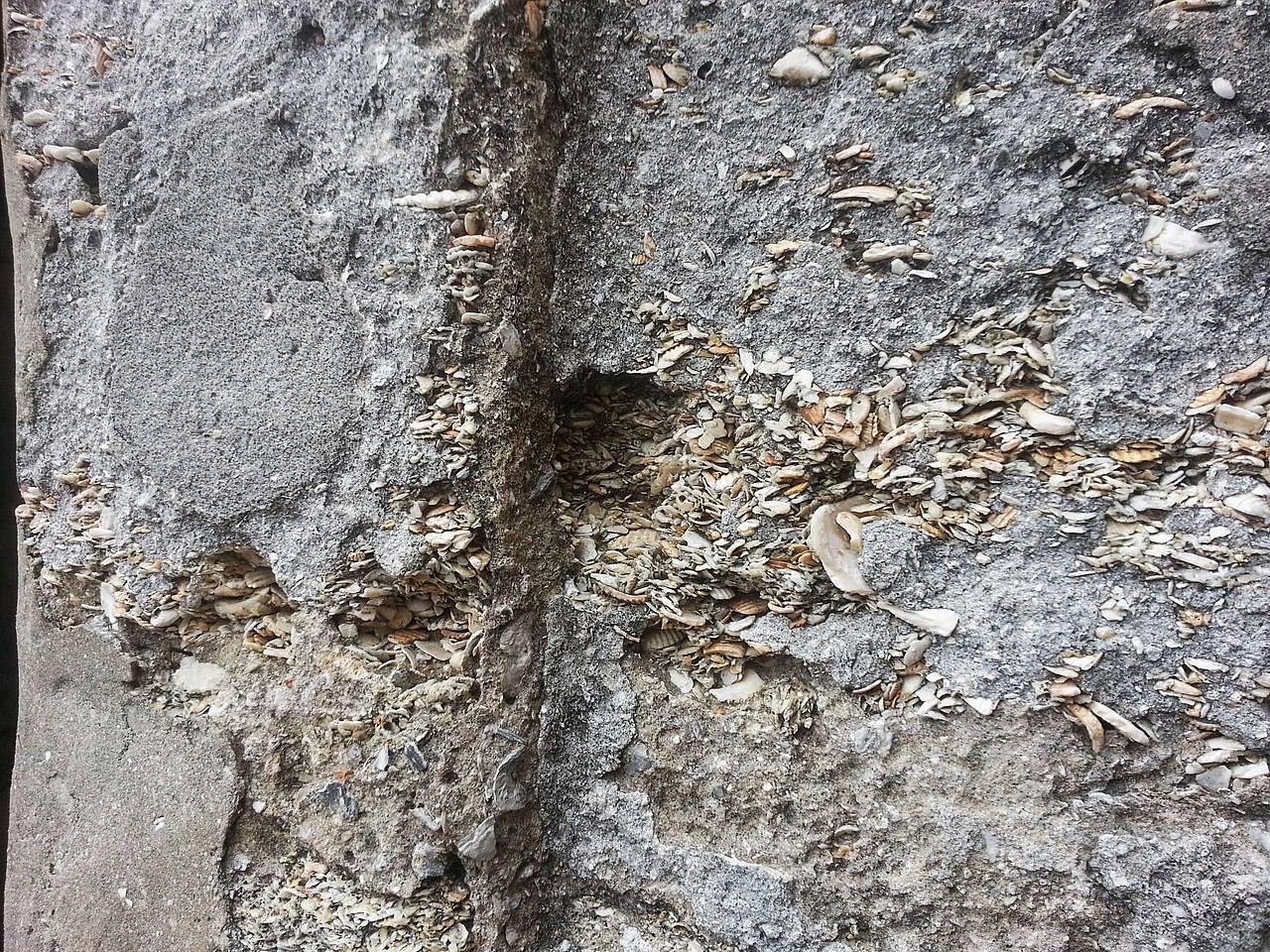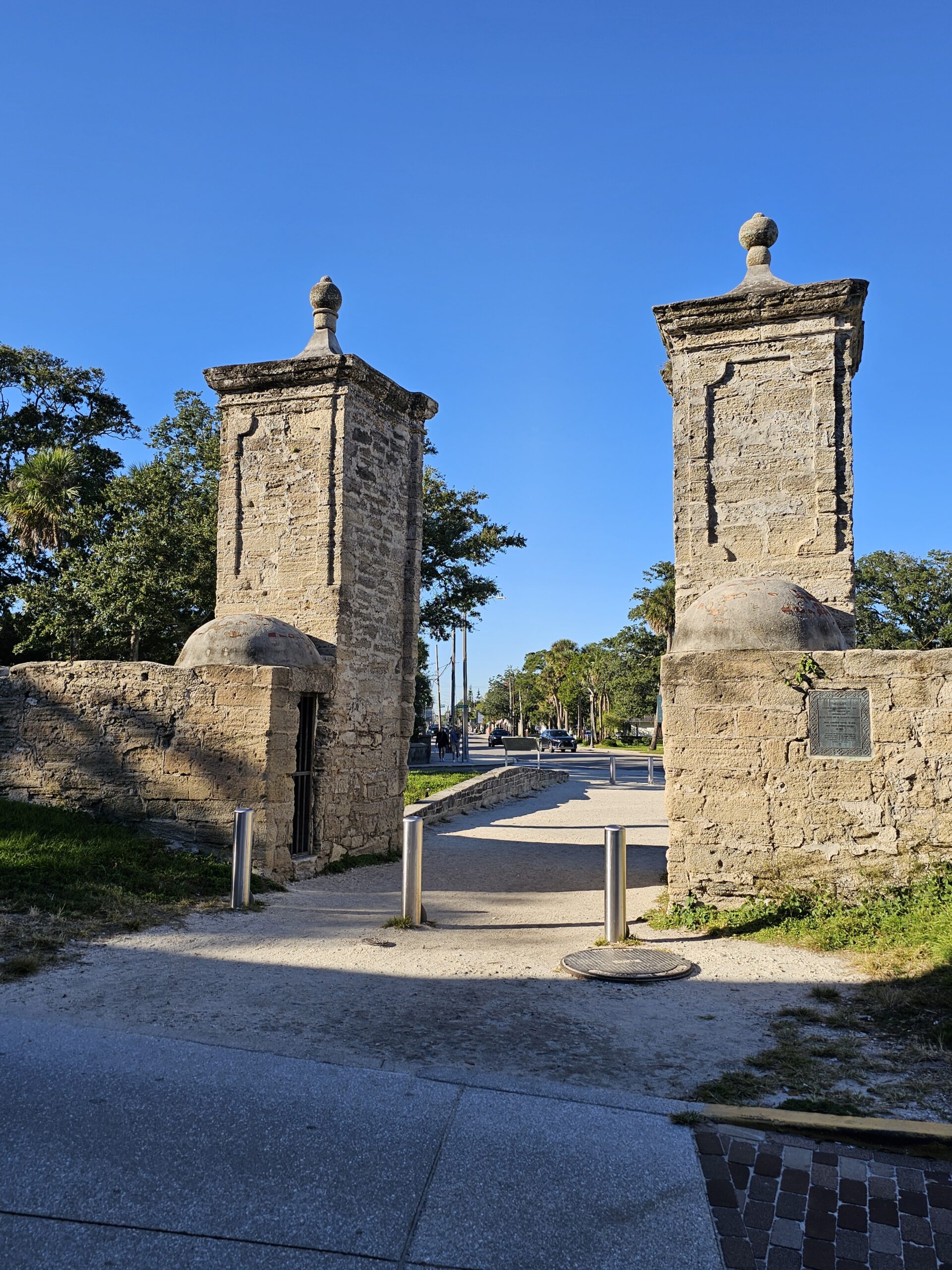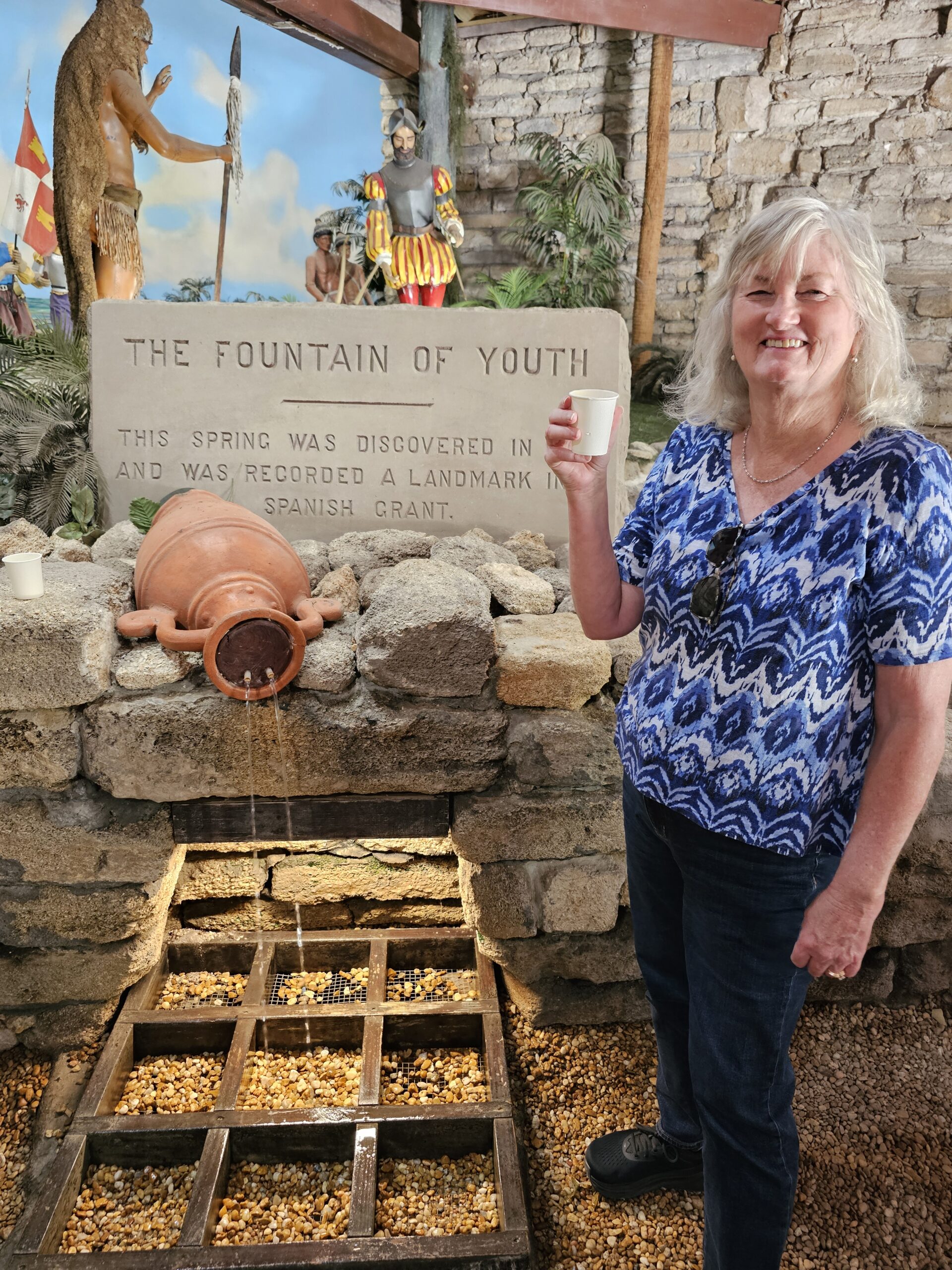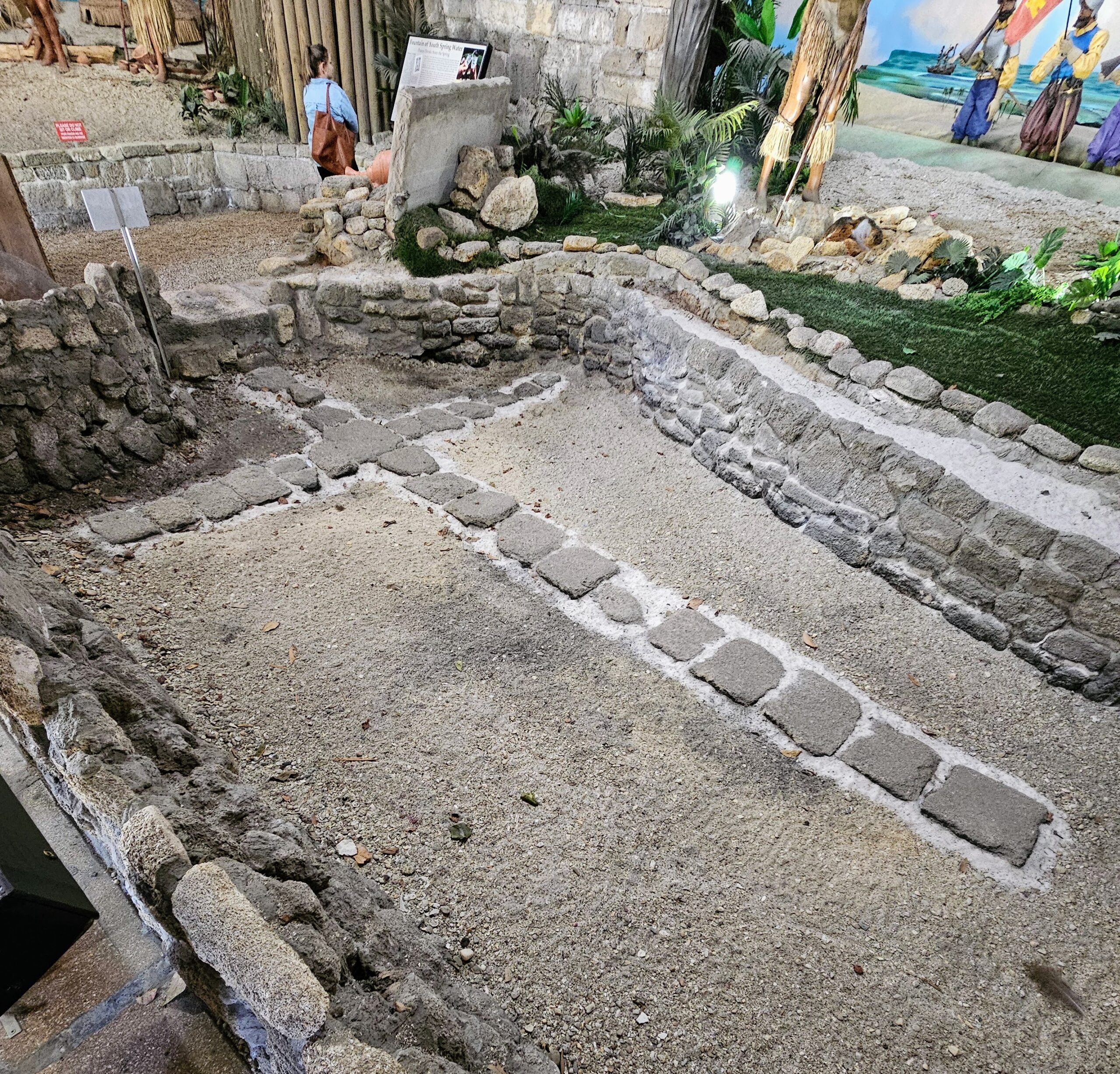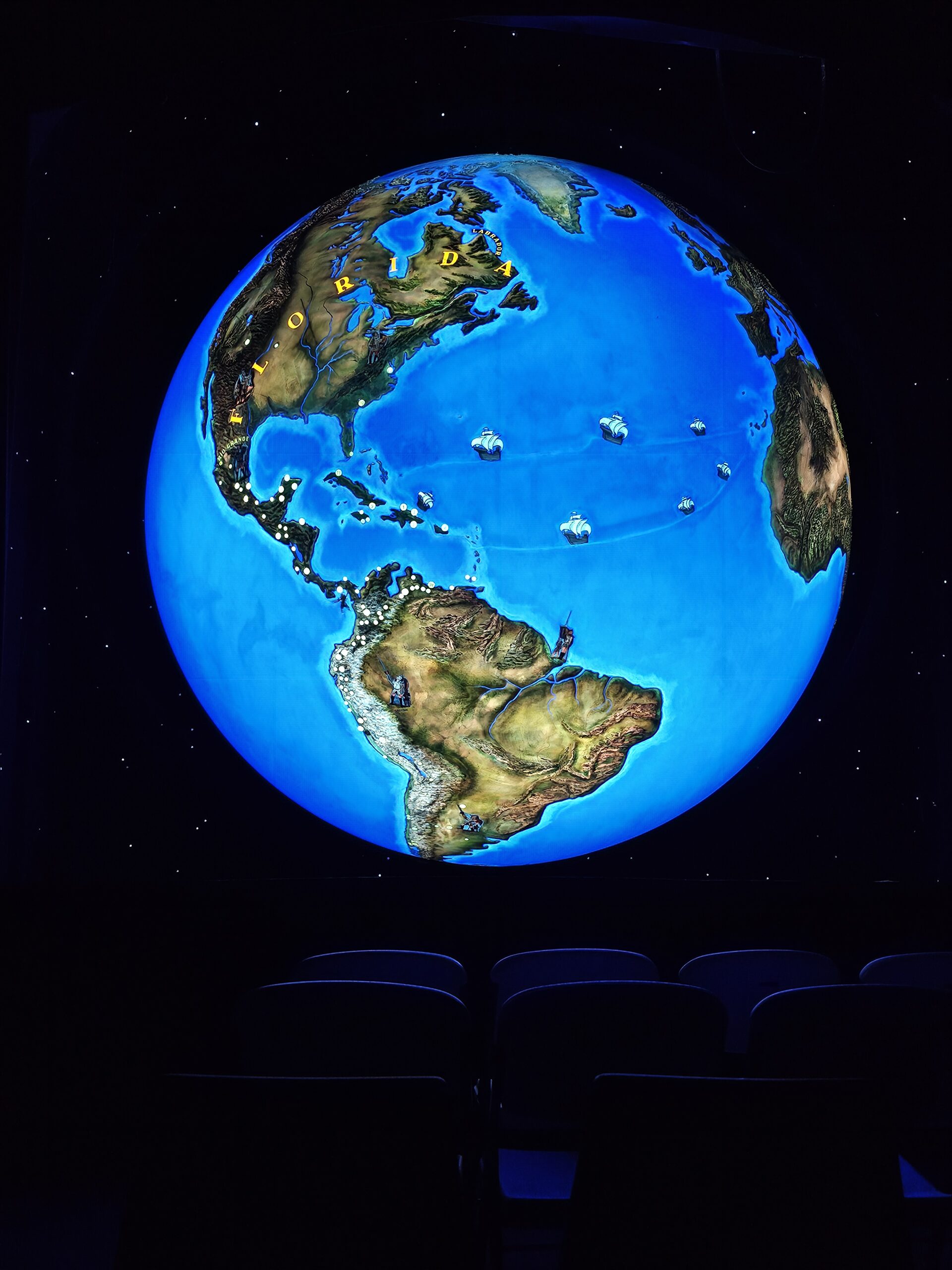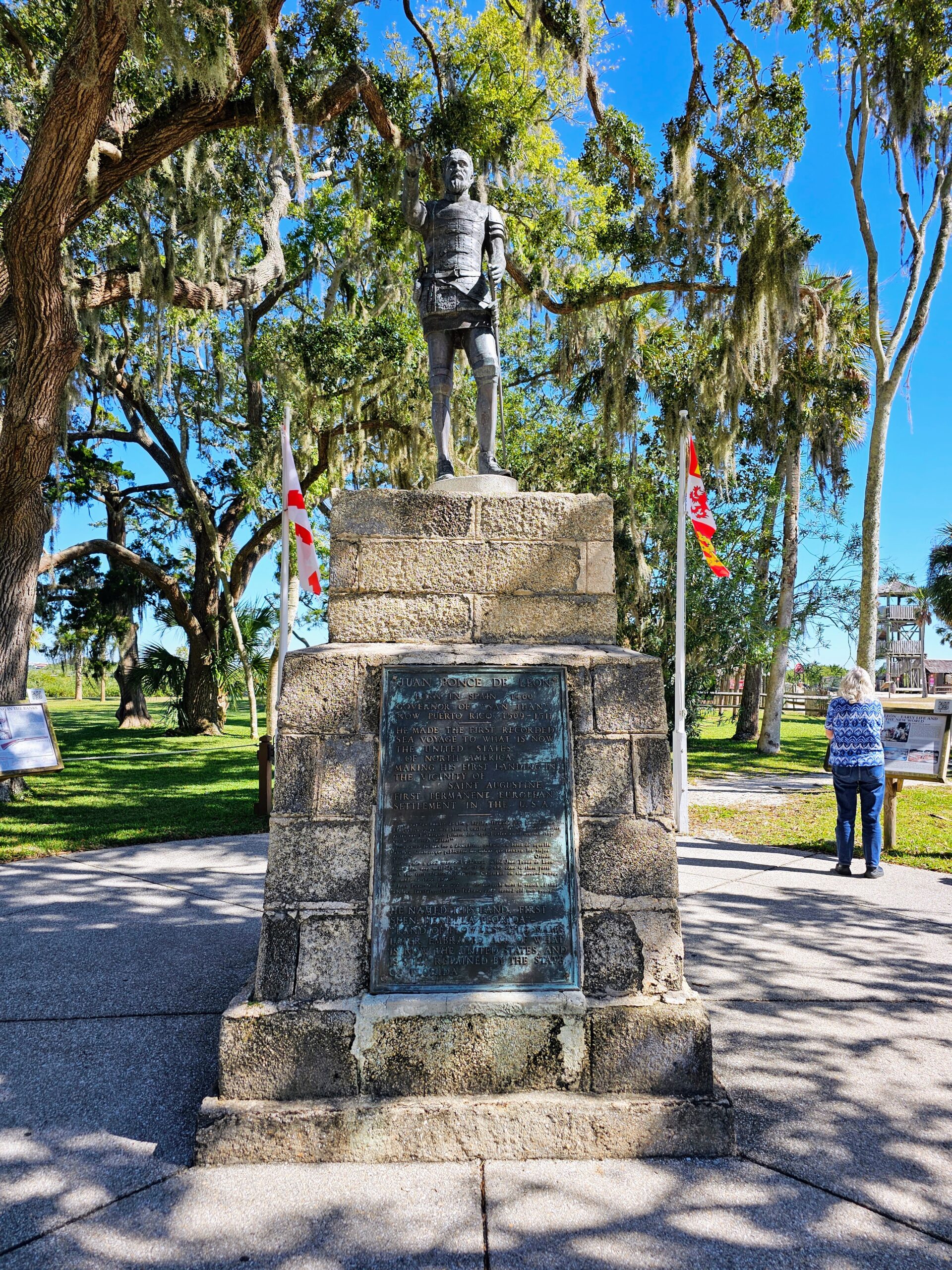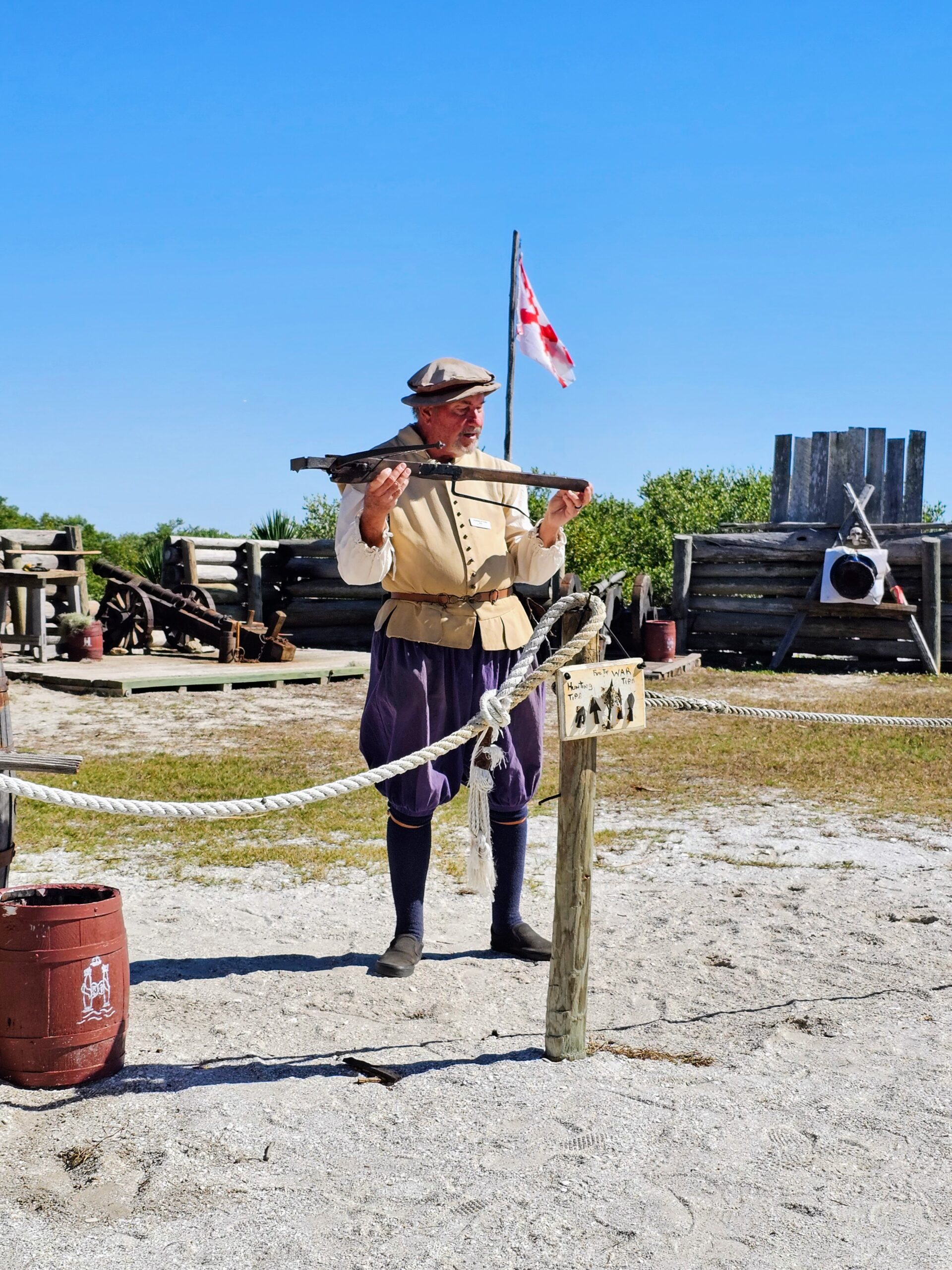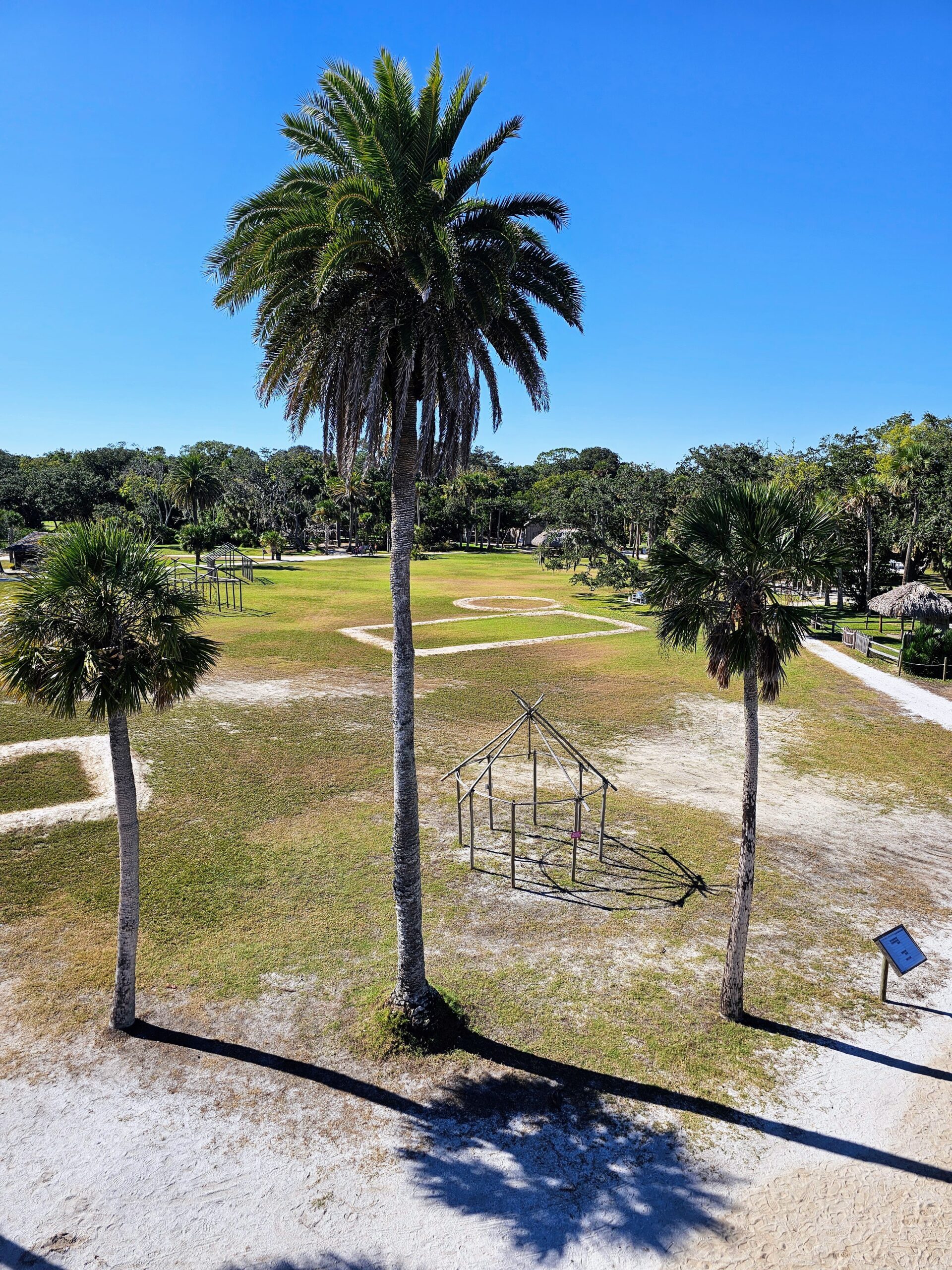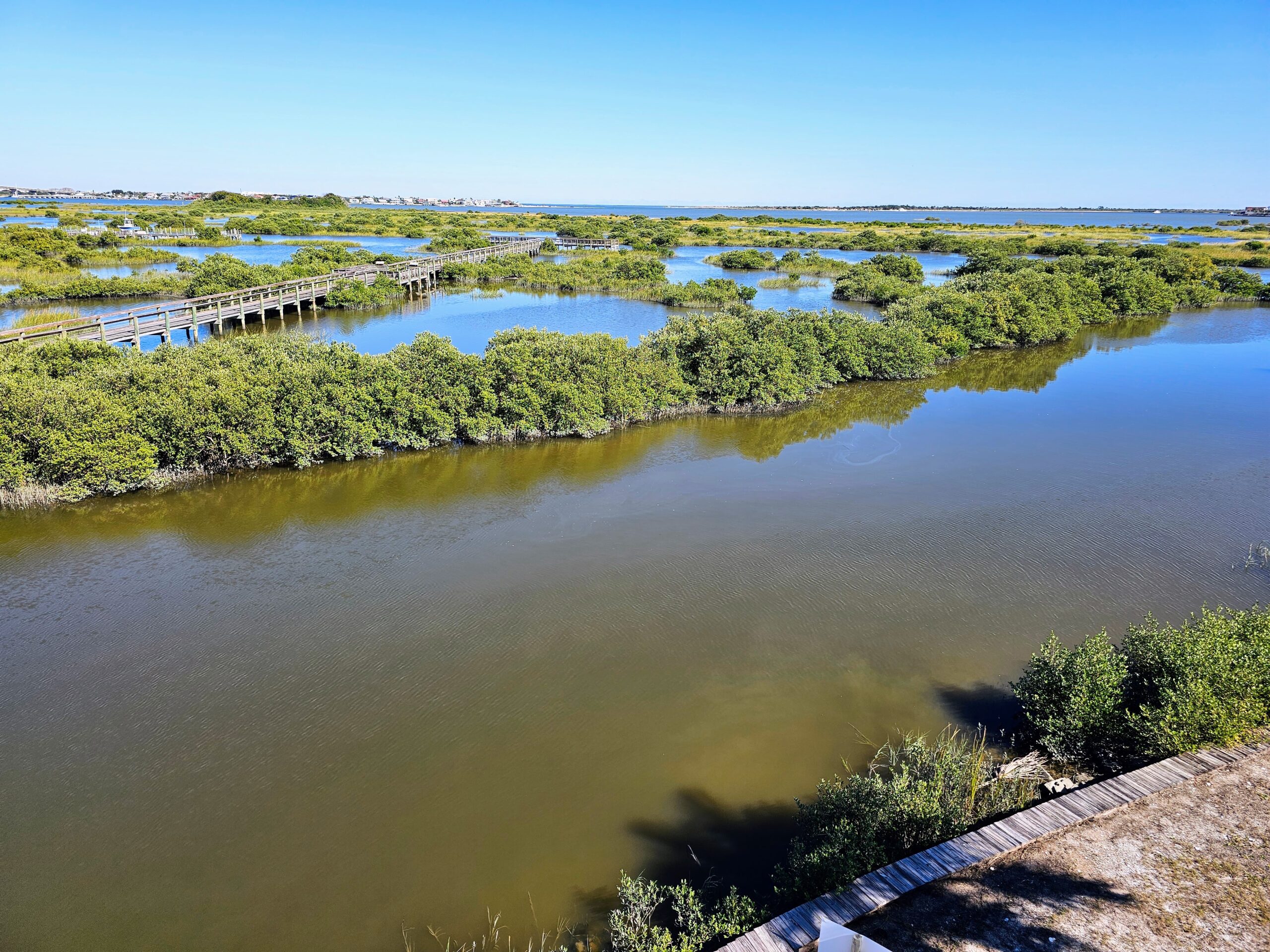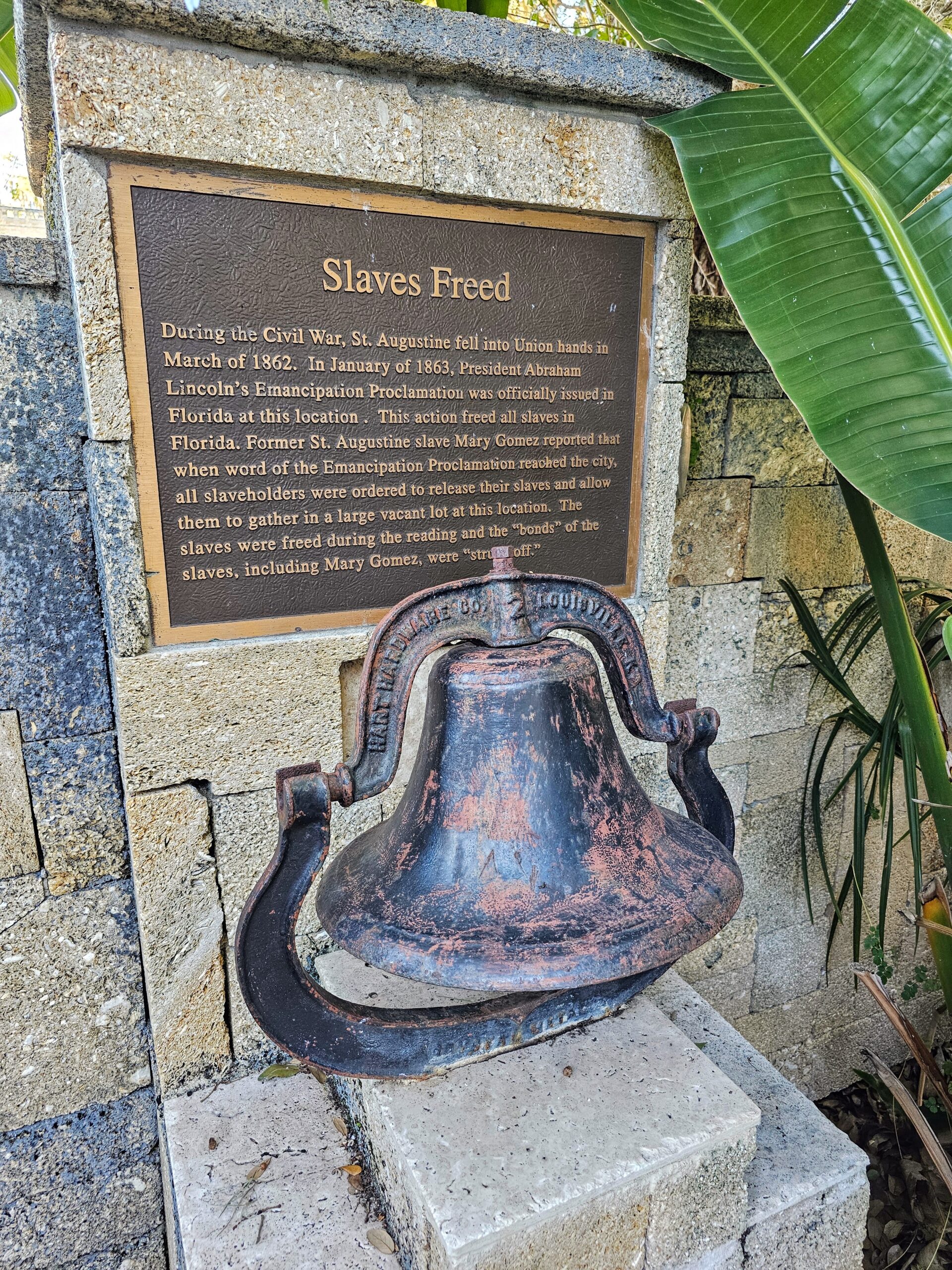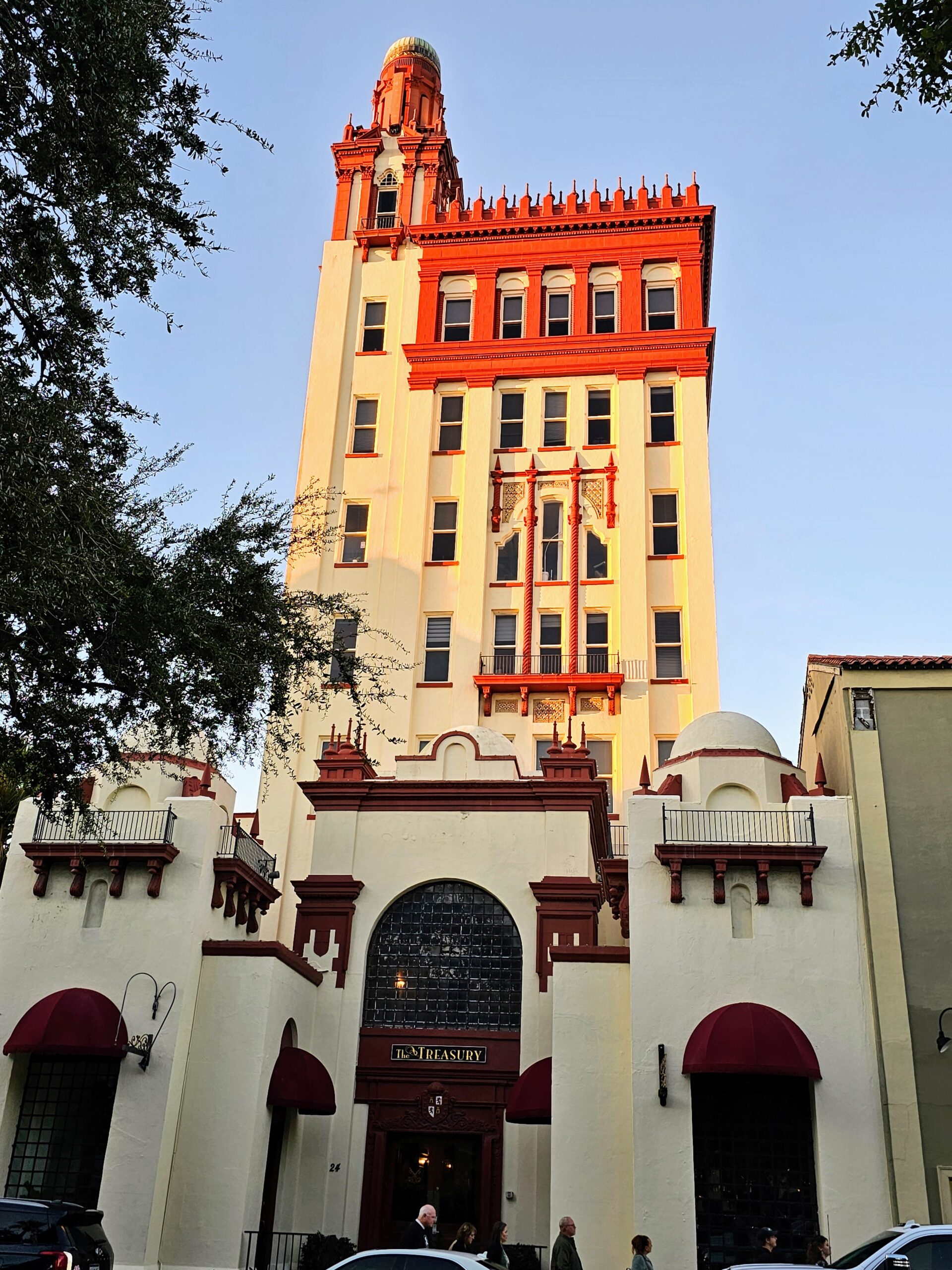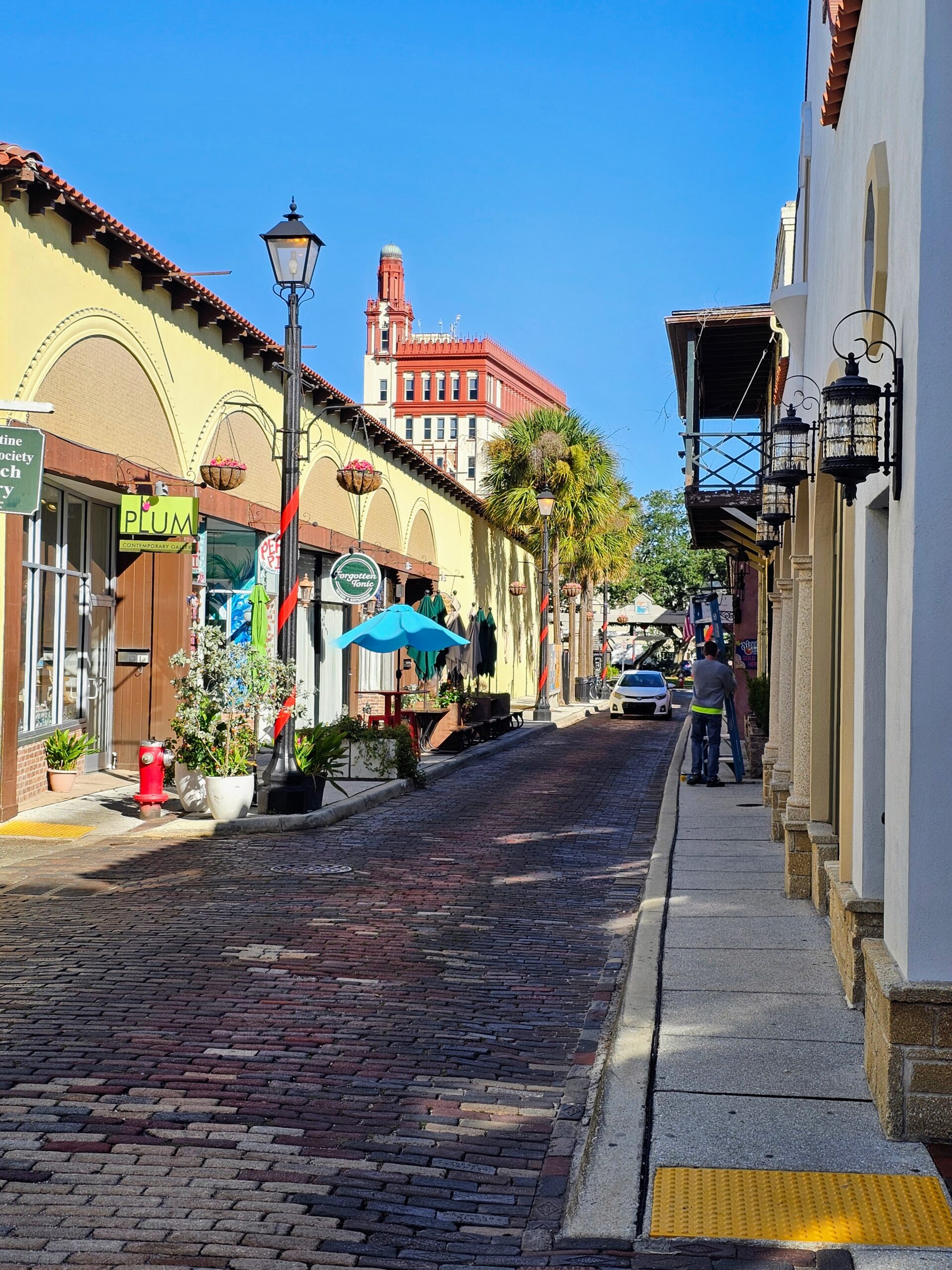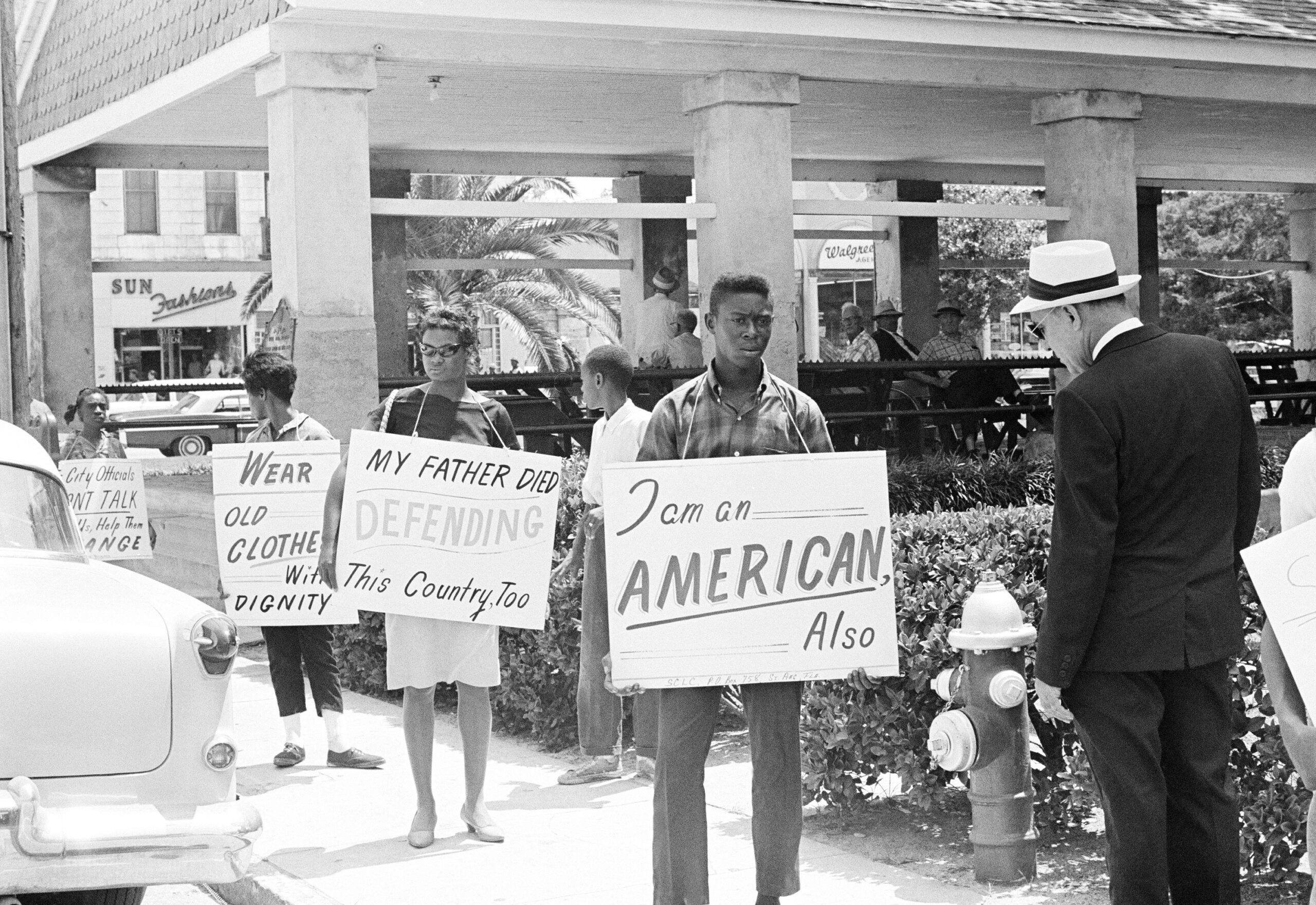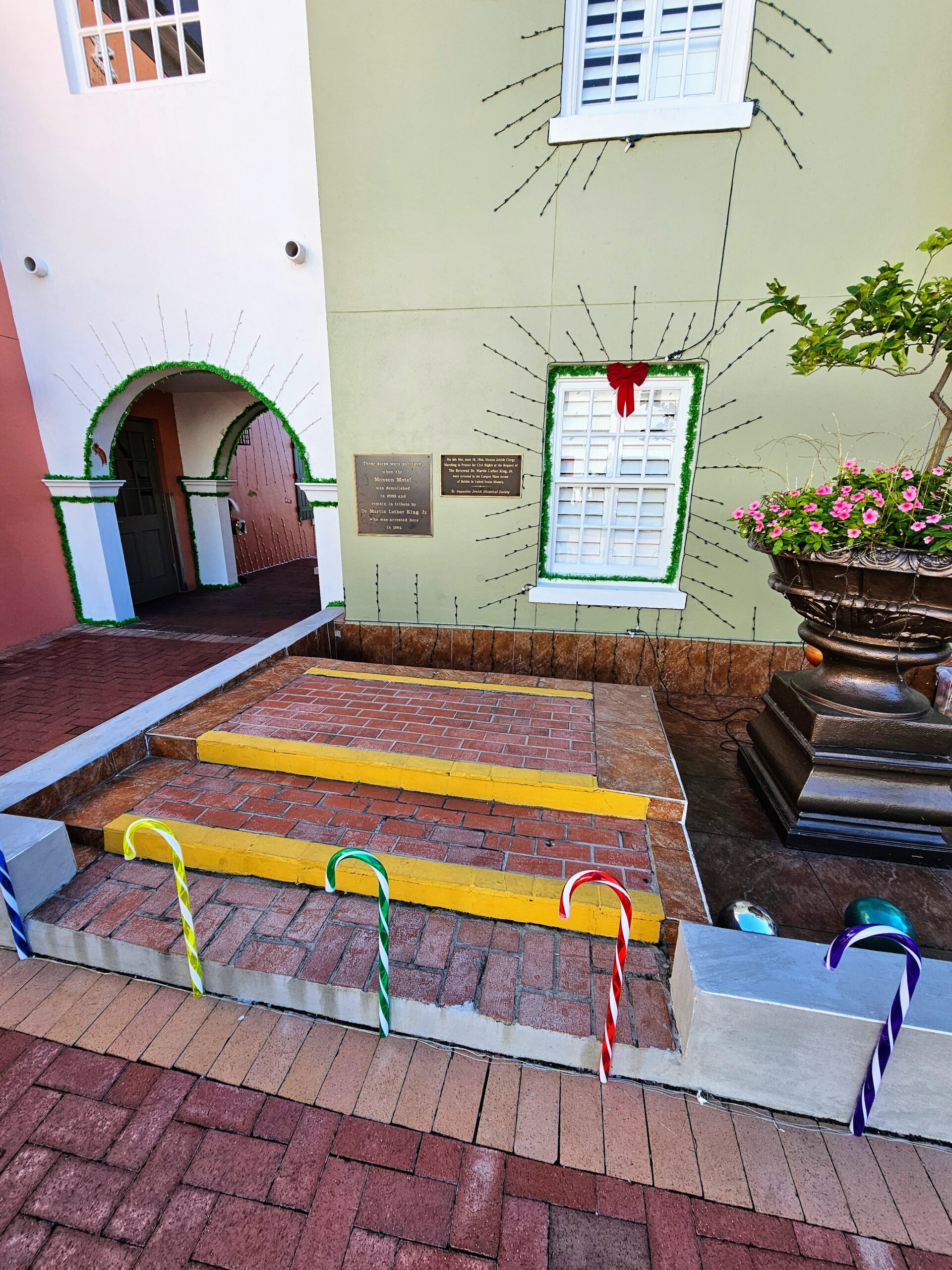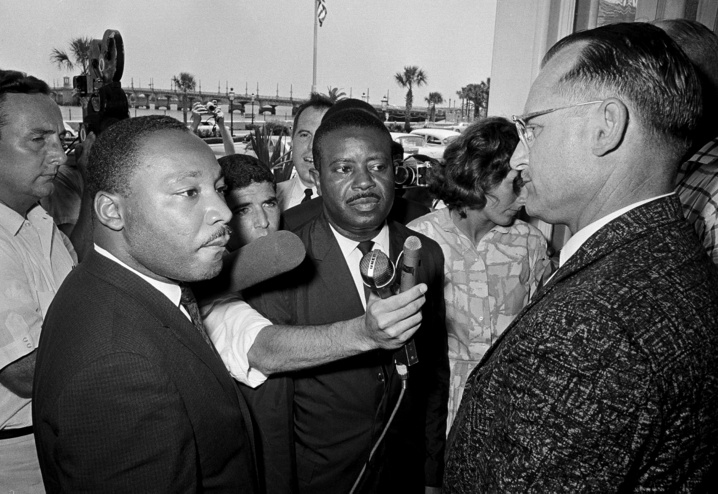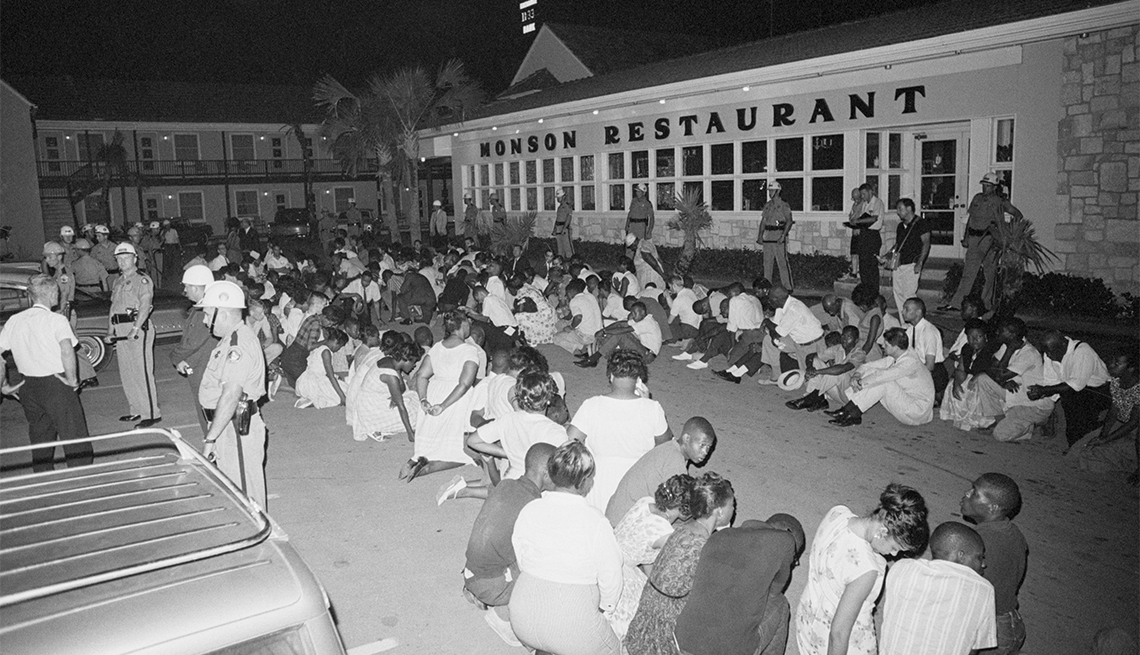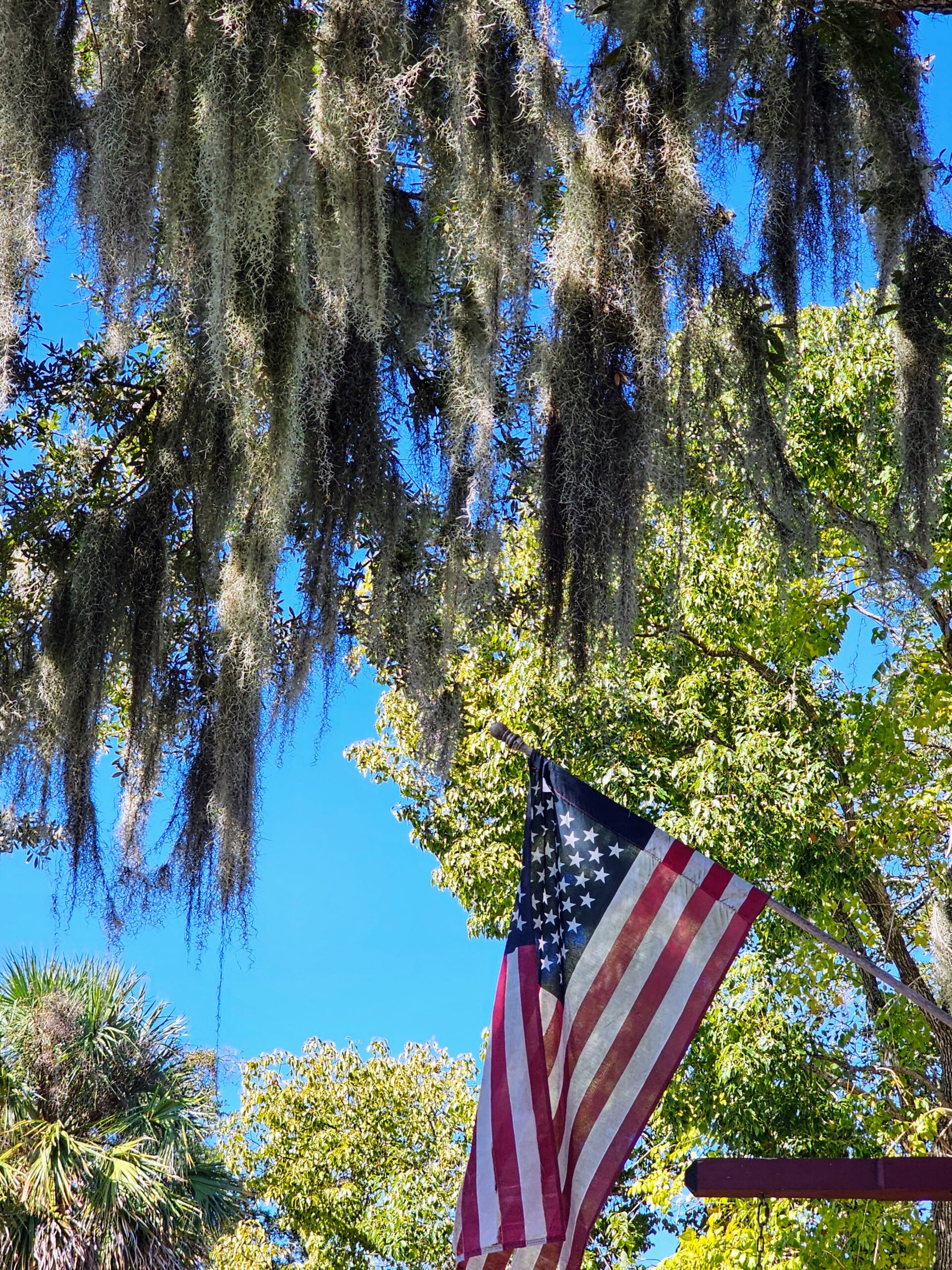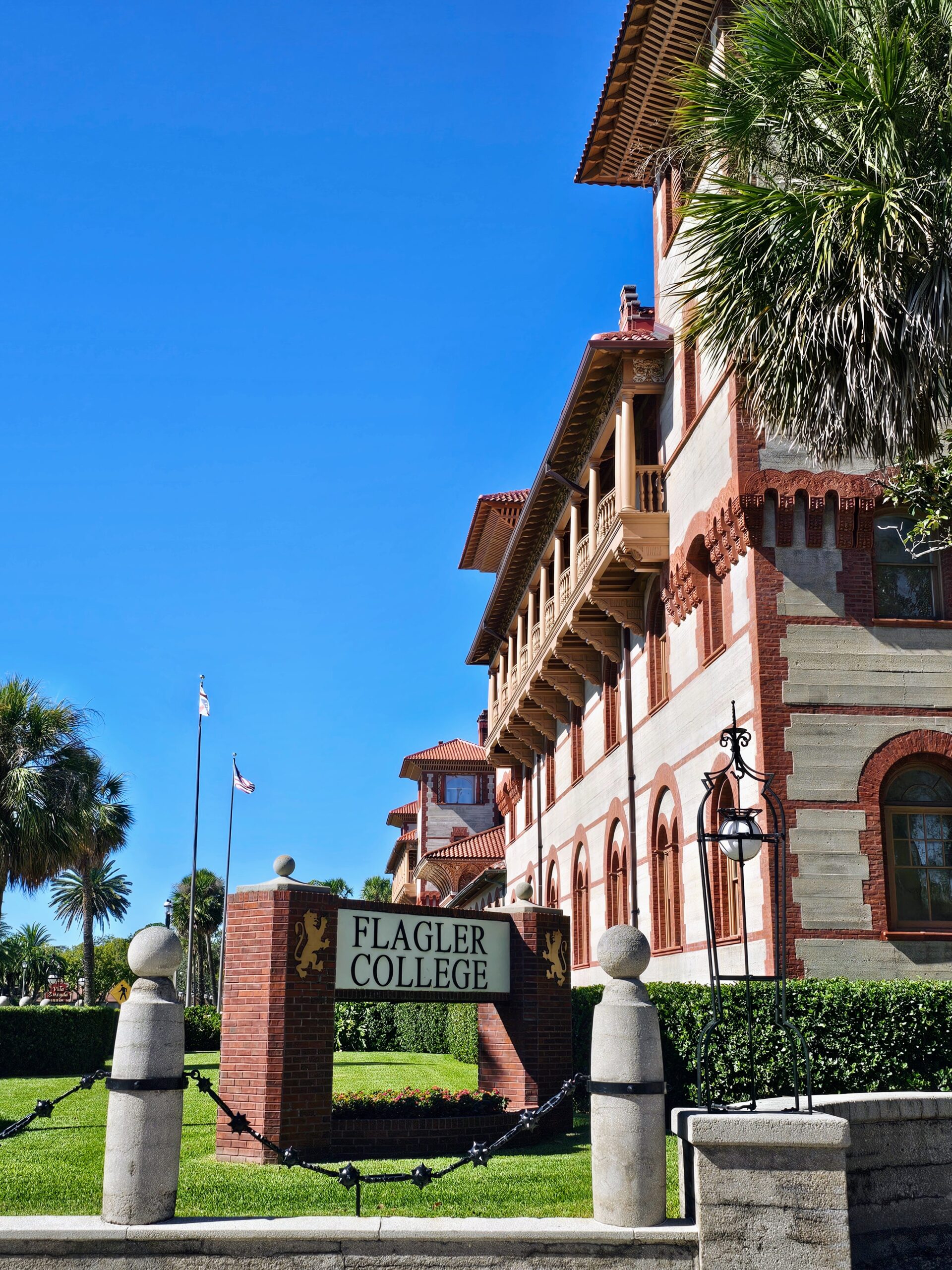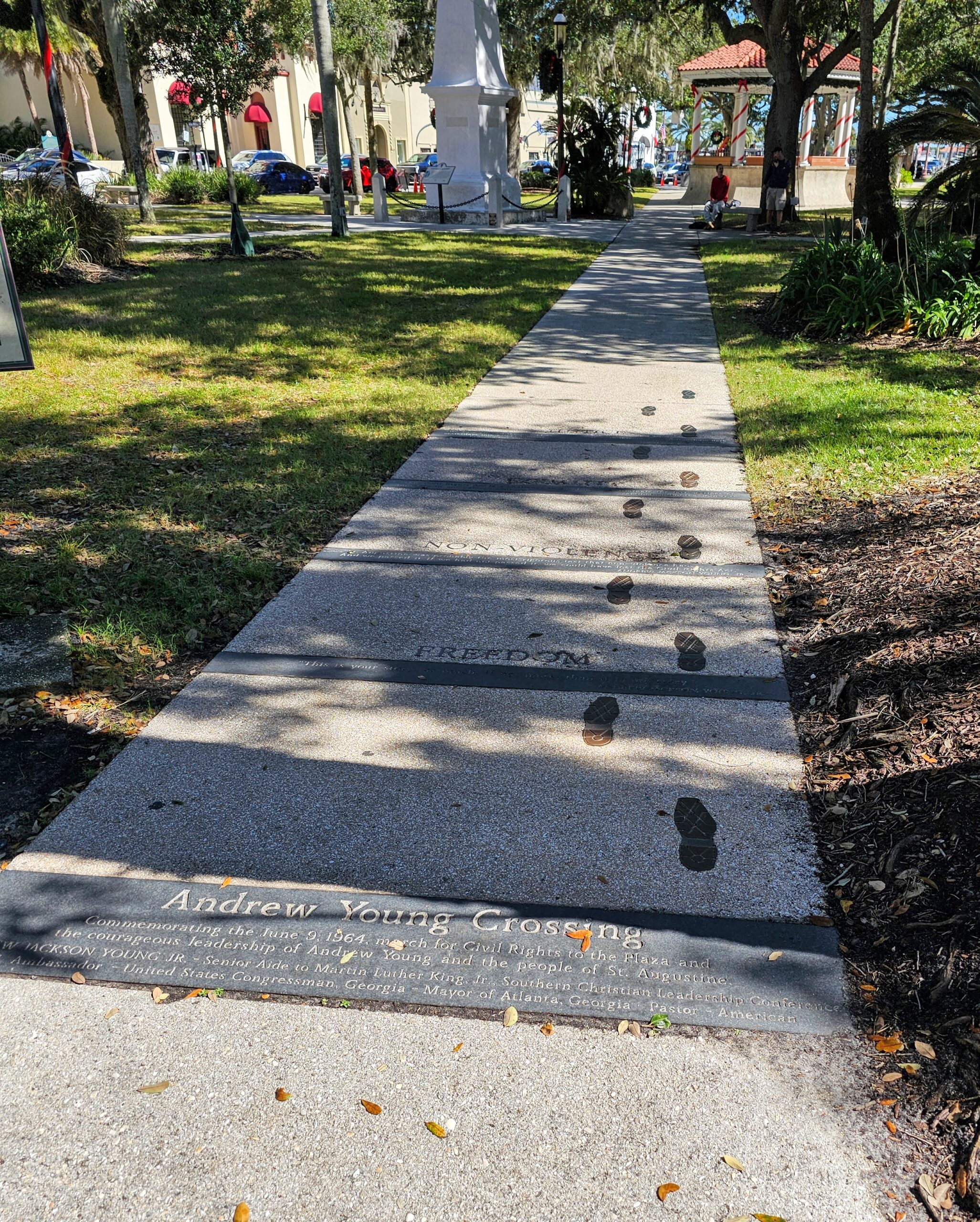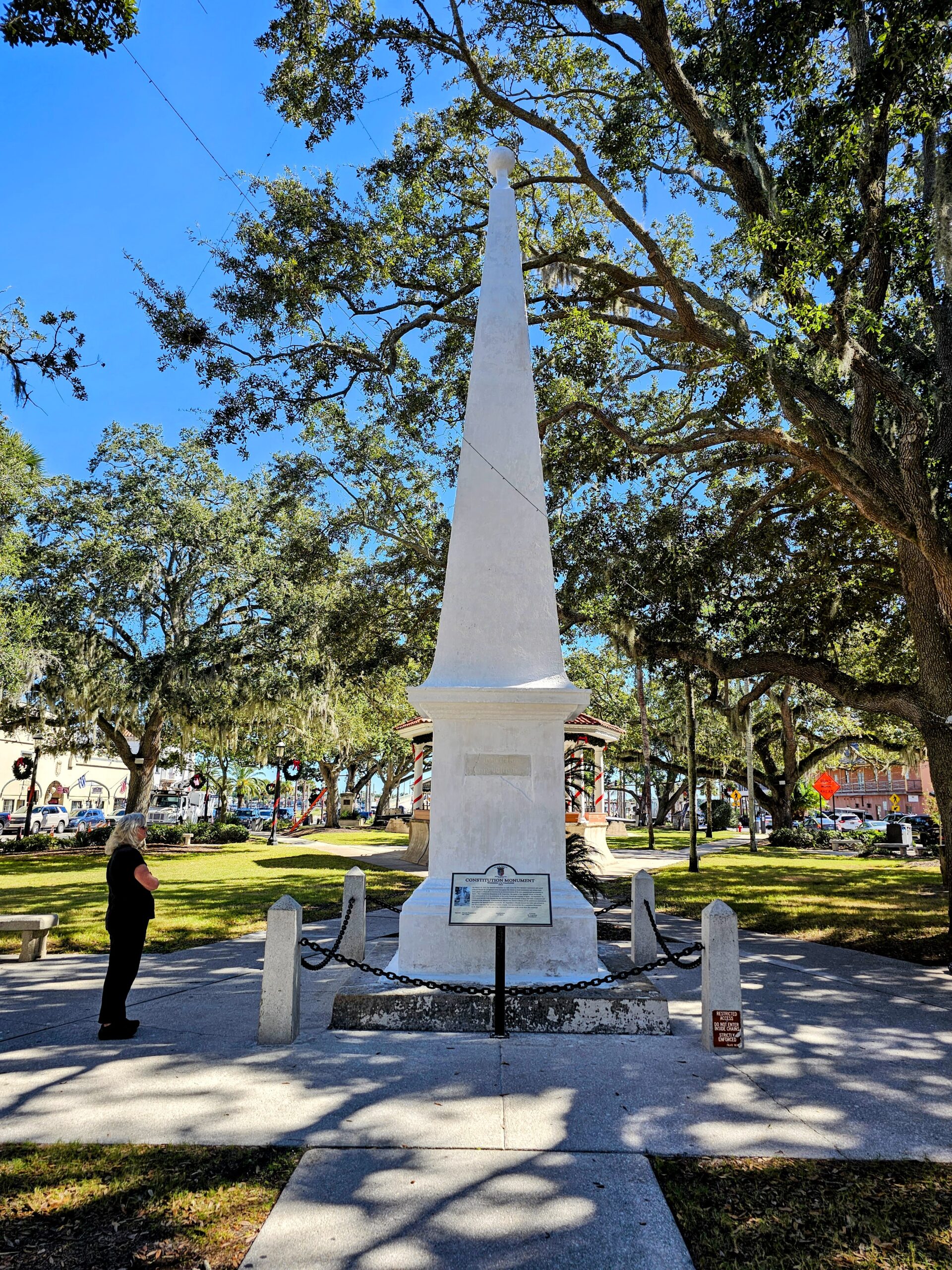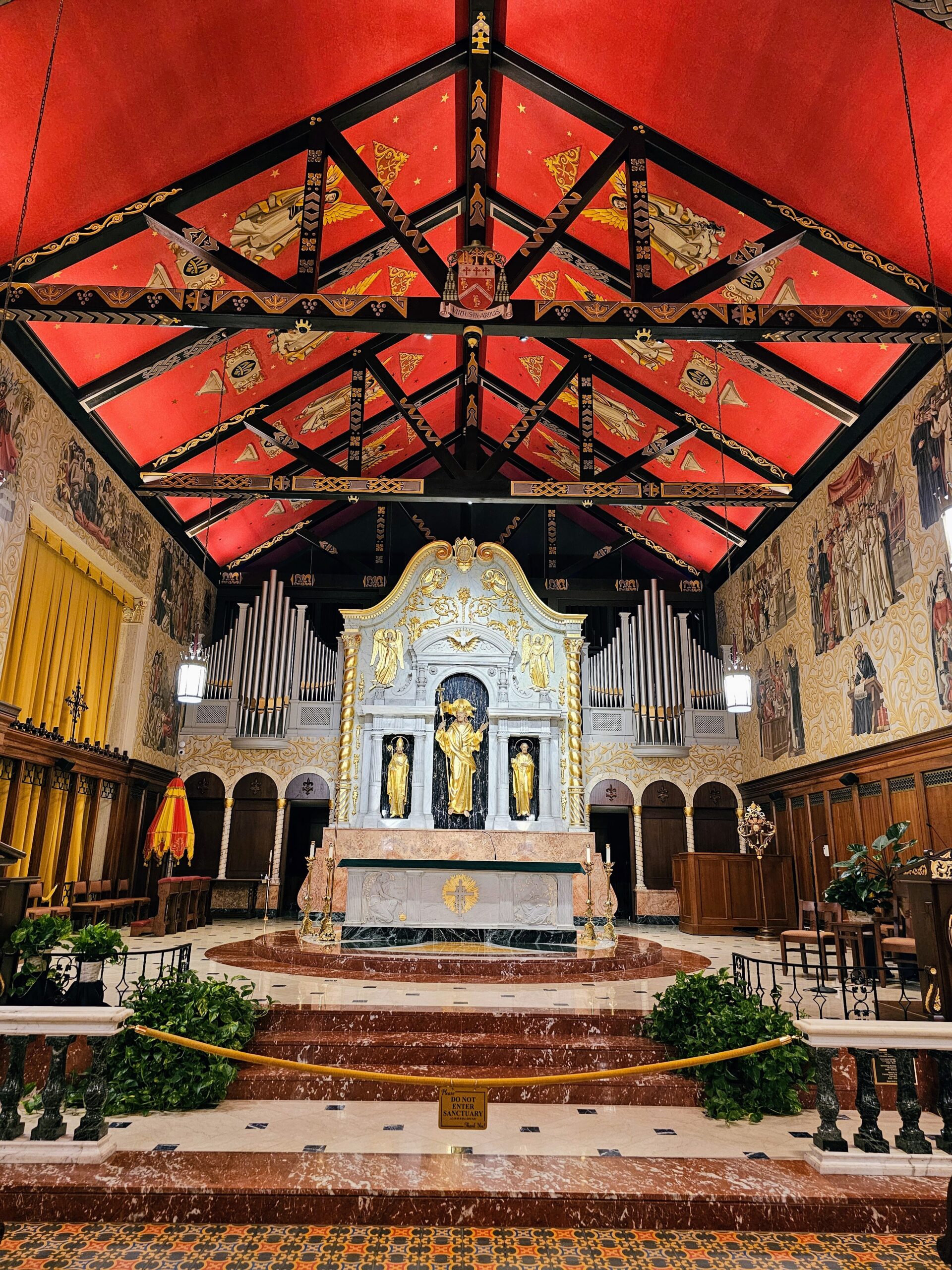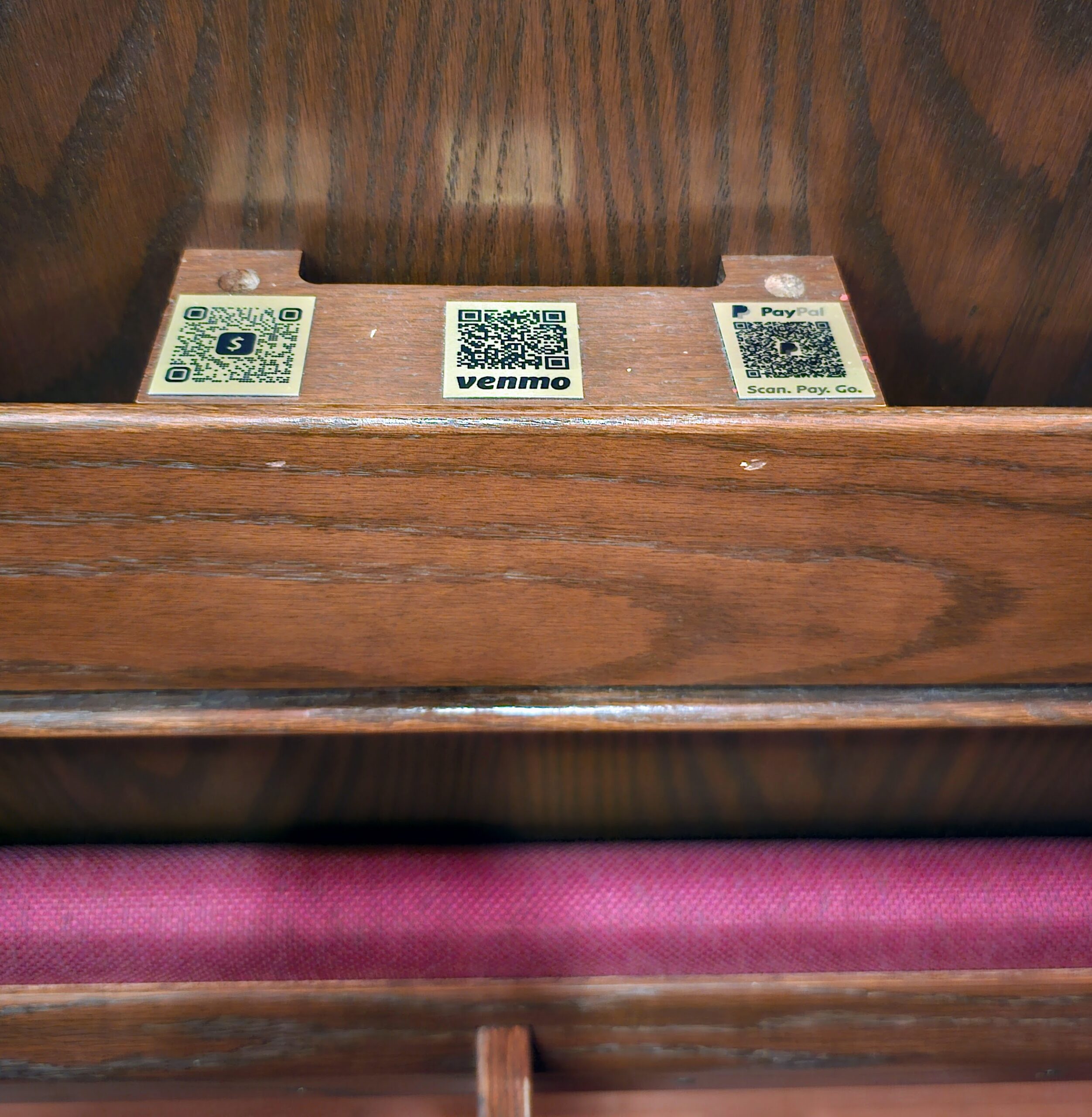To round out our first day we visited Castillo de San Marcos, the oldest masonry fort in the United States. Construction of the fort started in 1672 and was completed in 1695. It’s design is similar to the Spanish fort in San Juan, Puerto Rico, although much smaller.
The interior of the fort was unfortunately closed due to the “Schumer Shutdown”, but you could still walk around the exterior.
The current fort replaced the original wooden fort that was burned down by the English in 1668. The fort was constructed with “coquina”, a local sedimentary rock that is composed of crushed seashells compressed over thousands of years. This made for a much stronger fort that couldn’t be burned down. It was also able to withstand cannon shots, as the cannon balls would just sink into the walls, rather than shatter them. Many of the buildings in St. Augustine from the 1600’s up to 1930 were also built with coquina. Here is a close up photo of the wall of the fort, with what is likely a hole created by a cannonball, as this fort was attacked several times.
Adjacent to the fort is the “Old City Gate”, which is at the entrance to St. George Street, the most popular tourist street in St. Augustine. It’s kinda like Bourbon Street without the sleaze. Note the gate is constructed of coquina, just, like the fort.
On our second day we decided to take a Trolley Tour, which makes a stop at Ponce de Leon’s Fountain of Youth! The trolley is a good way to get around to the various St. Augustine attractions, particularly if you only have a day or two.
The Fountain of Youth is a mystical spring which supposedly restores the youth of anybody that drinks or bathes in it. Such a fountain has been legend since the 5th century BC, and became prominent in the 16th century when Spanish explorer Ponce de Leon traveled to Florida from Puerto Rico. Legend has it this is the spot where he landed, discovering this still active spring in 1513. You can drink from the spring today! This is the oldest attraction in Florida, with guest books dating back to 1868.
Next to the fountain is this cross made of coquina, which was discovered during some construction in 1916, buried 3 feet underground. This cross is 15 stones high and 13 stones across , indicating the date of 1513 and is thought to be a religious marker from Ponce de Leon’s expedition, making it the oldest known European artifact in the United States.
Adjacent to the building housing the spring is the Navigator’s Planetarium, with a short show describing how early Spanish and Portuguese explorers navigated across the Atlantic using the night sky.
Another exhibit is the Discovery Globe, a 30 foot tall globe that depicts Columbus’ voyages by using navigation and the trade winds. This giant lit up globe debuted at the park in 1959, and was considered an incredible use of technology at that time. Pretty cool from a nostalgic standpoint!
A short walk towards the bay is this statue of the famous explorer Ponce de Leon. Gotta admit he looks kinda short!
They have an hourly display of old weapons as well as a cannon firing. This guy was showing the mechanics of a period crossbow, which was often used at the time as they could be loaded and fired more quickly and worked effectively when it was wet. The cannon they load with powder is a replica of the cannons that were first brought to this site. It was plenty loud, and they only used a fraction of the powder that would have been used in the 15th century.
There is a replica Spanish Lookout that provides a good overview of the grounds. The area in the foreground is the actual first location of St. Augustine, where Spanish explorer Pedro Menendez de Aviles established a settlement in 1565. This was 55 years before the Pilgrims arrived and 78 years before the founding of Jamestown. The park has conducted archeological excavations here since 1934.
This is the view of Matanzas Bay from the lookout. Matanzas mean’s “slaughter” in Spanish, and it’s so named as in 1565 the Spanish murdered French settlers who attempted to settle in the same area as the Spanish city of St. Augustine. It’s quite odd to know there is a winery in California called Matanzas Creek?
Back at our accommodation, The Collector Inn, I took this photo at this historic site where it was announced in January 1863 that slavery was over by the ringing of this bell.
On our way to dinner that night I took this photo of the Treasury Building, one of the most iconic buildings on the St. Augustine skyline.
After dinner, this being Halloween night we saw several bands playing music, this one in the front yard of their house.
Then this one in a popular bar on St. George Street.
Coming up, we tour Flagler College and visit a couple more famous sites in St. Augustine!
